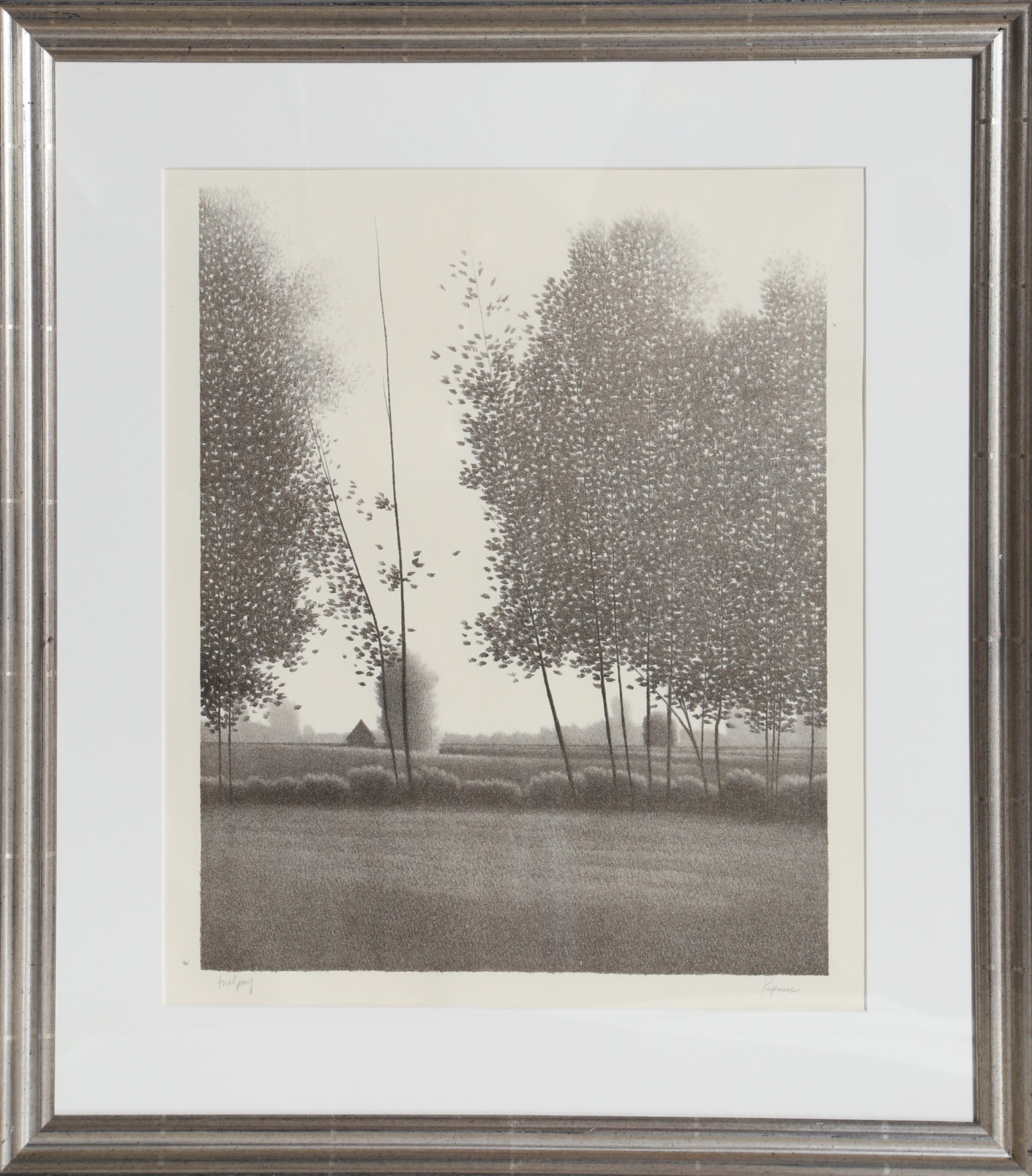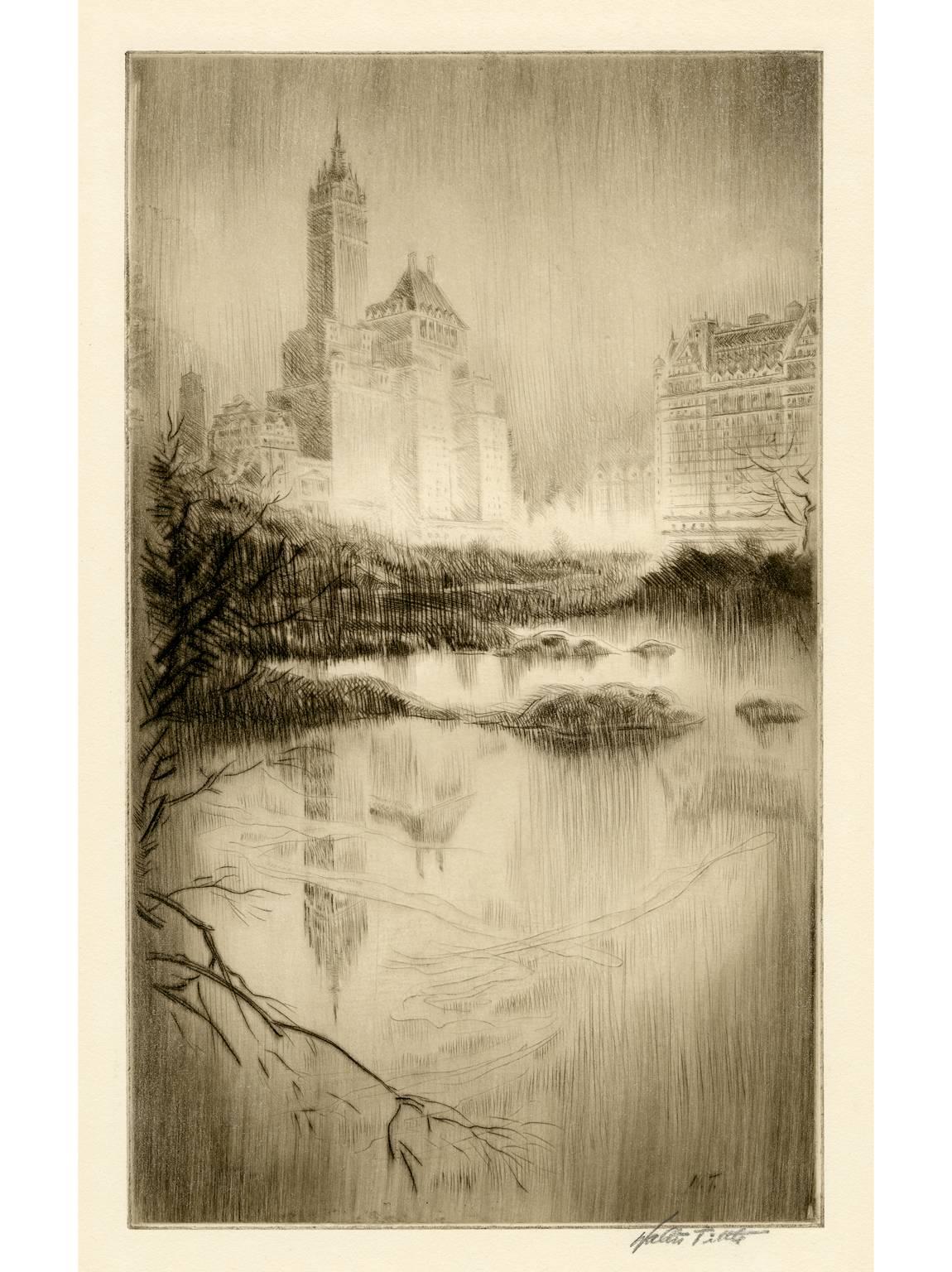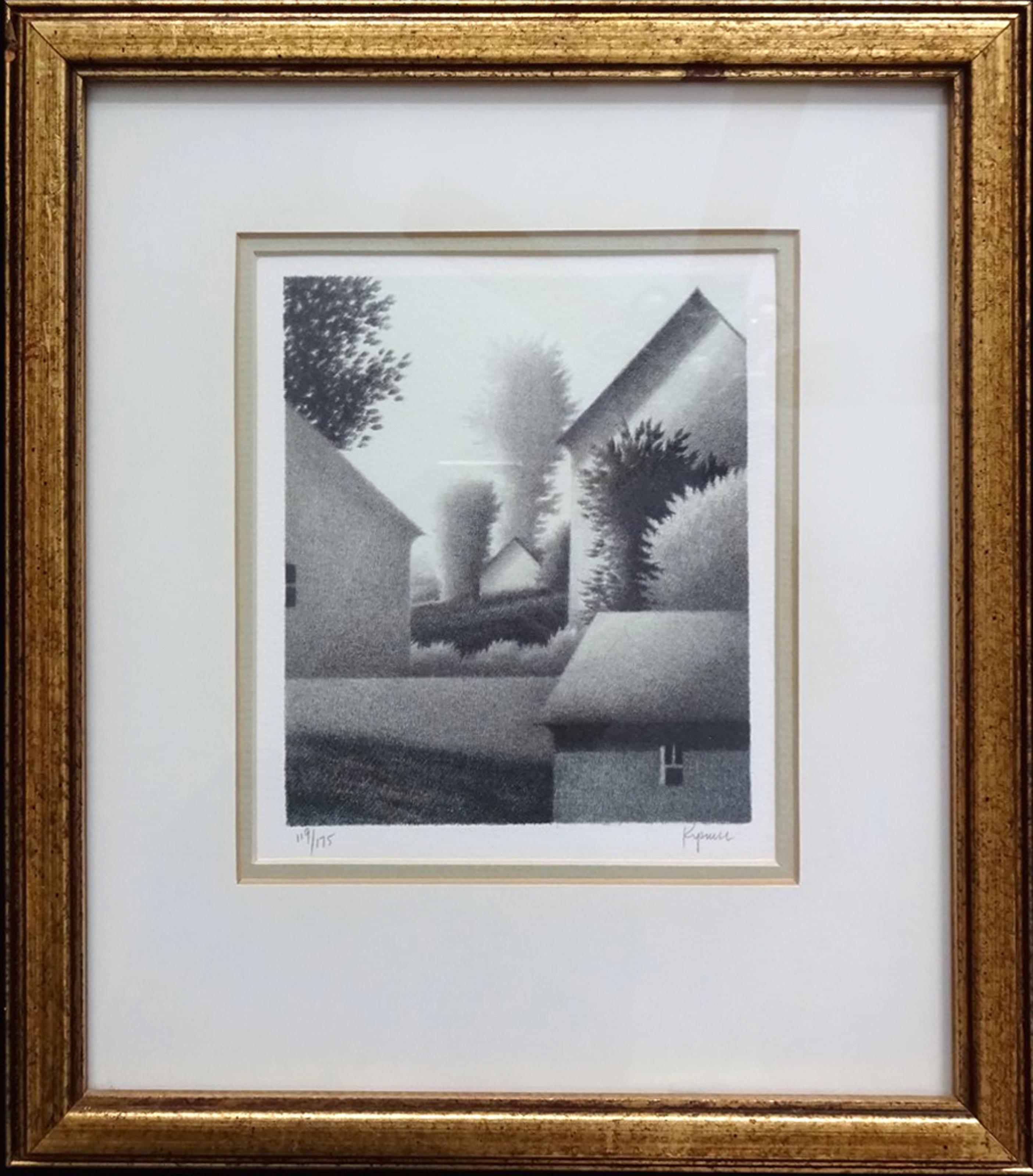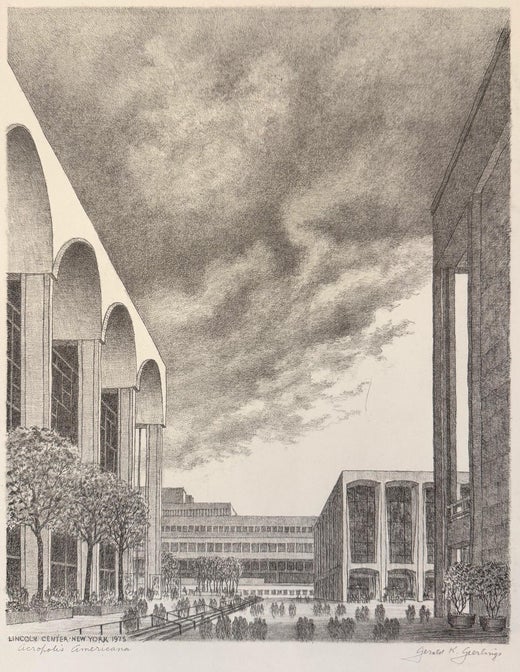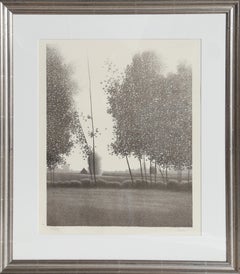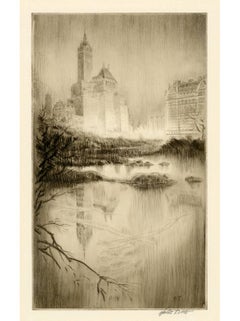Want more images or videos?
Request additional images or videos from the seller
1 of 2
Gerald GeerlingsBlack Magic1929
1929
$9,500
£7,268.25
€8,312.37
CA$13,527.17
A$14,651.55
CHF 7,760.11
MX$177,261.83
NOK 97,556.60
SEK 90,943.49
DKK 62,080.59
About the Item
Gerald Geerlings (1897-1998), Black Magic, etching and aquatint, 1929, signed in pencil lower right, titled and annotated (New York, 1928) lower left margin. Reference: Czestochowski 6, fourth state (of 4), from the edition of 100. In excellent condition, with full margins (slight rippling at outer margin edges), 11 3/4 x 6 1/2, the sheet 17 x 12 1/4 inches.
A fine glowing impression, printed on a greenish laid paper with the watermark TG Head & Co.
According to the web site of the Philadelphia Museum of Art this etching and aquatint portrays the Warwick Hotel (on West 54th Street and 6th Avenue, in New York), completed in 1927. Perhaps not.
- Creator:Gerald Geerlings (American)
- Creation Year:1929
- Medium:
- Movement & Style:
- Period:
- Condition:
- Gallery Location:New York, NY
- Reference Number:1stDibs: LU51531455363
Gerald Geerlings
Geerlings is best known for his lithographs and intaglio prints of the 1920s and 1930s. He was partly self-taught, although he studied periodically at the Royal College of Art in London between 1929 and 1932. His preferred subjects were the emerging metropolises of New York and Chicago in the 1920s and 1930s. He was awarded first prize for the best etching at the 'Century of Progress,' Chicago World's Fair of 1933 for Grand Canal, America, 1933. After his retirement from architectural practice in 1970, Geerlings devoted himself exclusively to drawing and lithography. The images created by Gerald K. Geerlings provide not only a quality of technical achievement but also a visual delight matched by few of his contemporaries. Throughout his distinguished career as a decorated soldier, an accomplished architect and an artist of substantial artistic virtuosity, Gerald Geerlings has created an elegant legacy. As an artist, Geerlings is by no means prolific. His meticulous working method is readily apparent in either his stunning aquatints of the 1920s through 1930s or delicate pastels from 1970 and the 1980s. Fewer than sixty prints in several mediums were created between 1926 to 1933 and 1975 to 1988. The images created by Gerald K. Geerlings provide not only a quality of technical achievement but also a visual delight matched by few of his contemporaries. Throughout his distinguished career as a decorated soldier, an accomplished architect, and an artist of substantial artistic virtuosity, Gerald Geerlings has created an elegant legacy
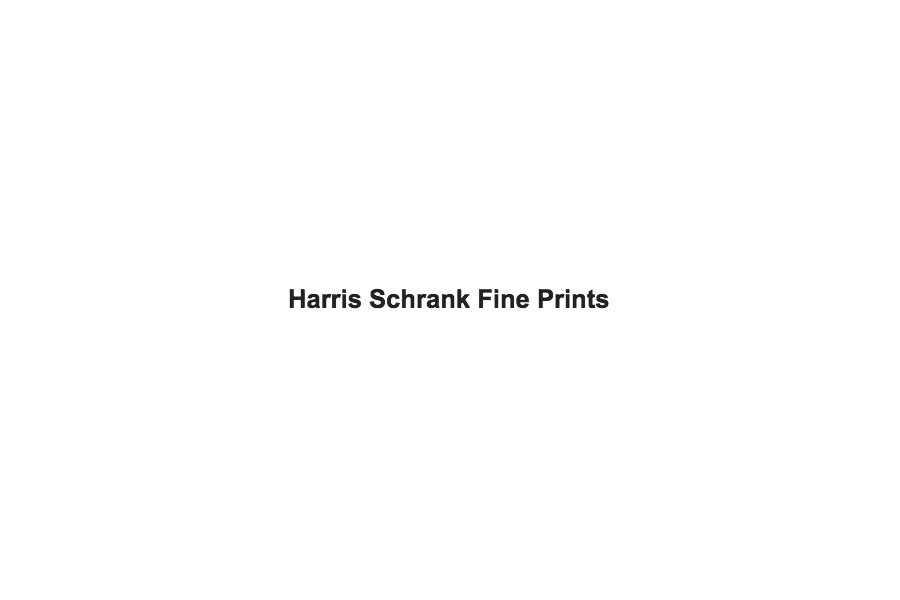
About the Seller
4.9
Recognized Seller
These prestigious sellers are industry leaders and represent the highest echelon for item quality and design.
Established in 2000
1stDibs seller since 2016
108 sales on 1stDibs
Typical response time: 9 hours
Associations
International Fine Print Dealers Association
- ShippingRetrieving quote...Shipping from: New York, NY
- Return Policy
More From This Seller
View AllUp-Rising
By Arthur B. Davies
Located in New York, NY
Arthur B. Davies, Up-Rising, soft ground etching and aquatint on a cream laid paper, 1919, signed in pencil lower right margin. Reference: Czestochowski 78, second state (of 3). In g...
Category
1910s American Impressionist Figurative Prints
Materials
Etching, Aquatint
Soaring New York
By Howard Norton Cook
Located in New York, NY
Howard Cook (1901-1980), Soaring New York, aquatint, soft0ground etching, roulette, 1931-2; signed, dated and annotated “imp” in pencil lower right, titled lower margin. Reference: D...
Category
1930s American Realist Landscape Prints
Materials
Etching
Tartessians
By Arthur B. Davies
Located in New York, NY
Arthur B. Davies (1862-1928), Tartessians, soft ground etching with aquatint, 1919-20, signed in pencil lower right. Reference: Czestochowski 96, second state (of 2), total printing ...
Category
1910s American Impressionist Figurative Prints
Materials
Etching, Aquatint
Torment
By Arthur B. Davies
Located in New York, NY
Arthur B. Davies (1862-1928), Torment, soft ground etching with aquatint and roulette, 1919-20, signed with the estate stamp lower right, and signed by the printer Frank A. Nankivell...
Category
1910s American Impressionist Nude Prints
Materials
Etching, Aquatint
Armistice Day, 1918
By William Meyerowitz
Located in New York, NY
William Meyerowitz (1898-1981), Armistice Day, 1918, etching with watercolor.
Edition not stated. Signed in pencil. Signed and dated in the plate, lower left.
Image size 9 3/4 ...
Category
1910s American Impressionist Landscape Prints
Materials
Watercolor, Etching
Wuxtry! [Extra!]
By Albert Abramovitz
Located in New York, NY
Albert Abramovitz (1879-1963), Wuxtry! [Extra?!], linocut in colors, c. 1936, signed in pencil lower right and titled lower center [also initialed in the plate]. In very good conditi...
Category
1930s American Realist Figurative Prints
Materials
Linocut
You May Also Like
Landscape
By Carson Gladson
Located in San Francisco, CA
About the artist:
Bay Area artist, Carson Gladon's "transparent collages" combine the elements of nature with a mix of computer graphics and traditional painting using vivid and pastel colors. Seeming, "to infuse the techniques of the European impressionists with a hint of the delicacy of a Chinese or Japanese silk screen...
Category
21st Century and Contemporary American Impressionist Landscape Prints
Materials
Lithograph
Tual, Surrealist Landscape Mezzotint by Robert Kipniss
By Robert Kipniss
Located in Long Island City, NY
Artist: Robert Kipniss, American (1931 - )
Title: Tual
Year: circa 1980
Medium: Mezzotint, signed and numbered in pencil
Edition: Trial Proof
Image Size: 14.75 x 11.75 inches
Frame:...
Category
1980s American Impressionist Landscape Prints
Materials
Mezzotint
The Plaza, Sunset Glow
By Walter Tittle
Located in Myrtle Beach, SC
'The Plaza, Sunset Glow', drypoint, c. 1920s, edition not stated. Signed in pencil and initialed in the plate, lower right. Titled 'The Plaza, Sunset' and annotated 'no. 165' in ink, in the bottom left sheet corner. A superb, luminous impression in dark brown ink, with selectively wiped plate tone; on cream wove paper; the full sheet with margins (1 to 2 1/4 inches). Pale tape stains on the top sheet edge, recto, well away from the image, otherwise in excellent condition. Matted to museum standards, unframed.
A view across 'The Pond' in New York City's Central Park, toward Grand Army Plaza...
Category
1920s American Impressionist Landscape Prints
Materials
Drypoint
Landscape
By Robert Kipniss
Located in San Francisco, CA
This artwork "Landscape" c.1980 is an original color lithograph on wove paper by noted American artist Robert Kipniss, b.1931. It is hand signed and numbered 168/200 in pencil by the...
Category
Late 20th Century American Modern Landscape Prints
Materials
Lithograph
Landscape #I
By Thomas Monaghan
Located in San Francisco, CA
This artwork "Landscape #I' c.2000 is an original color monotype by American artist Thomas (Tom) Monaghan, b. 1961. It is hand signed and numbered 1/1 in pencil by the artist. The im...
Category
21st Century and Contemporary American Impressionist Landscape Prints
Materials
Monotype
Another Summer, Modern Lithograph by Robert Kipniss
By Robert Kipniss
Located in Long Island City, NY
Another Summer
Robert Kipniss, American (1931)
Date: circa 1980
Lithograph, signed and numbered in pencil
Edition of 119/175
Size: 6.5 x 5.5 in. (16.51 x 13.97 cm)
Frame Size: 13 x 1...
Category
1980s American Impressionist Landscape Prints
Materials
Lithograph
More Ways To Browse
Whistler Limehouse
1910 Etching Nyc
1919 Thomas Moran 1919
Altman Benches
Andy Warhol Brooklyn Bridge
Ann Reeves
Antony Gormley Horizon Field
Arthur John Strutt
Bill Ogden
Bob Dylan Train Tracks
Brooklyn Bridge Warhol
Buell Whitehead
Calder Soleil
California Wine Posters
Cannes Vintage Travel Poster
Charles Wysocki
Childe Hassam On Sale
Currier Ives New York
